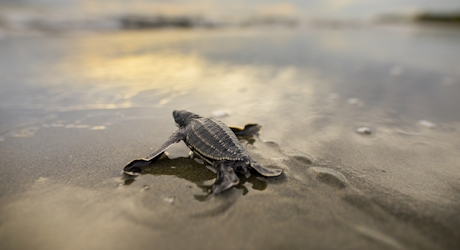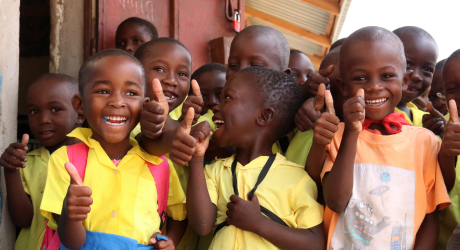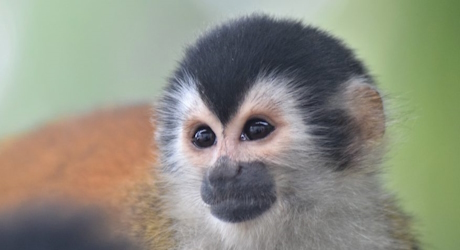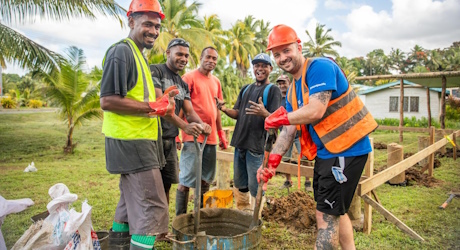Footprints Project
Since 2005, travelers like you have helped us change the world through micro-donations.
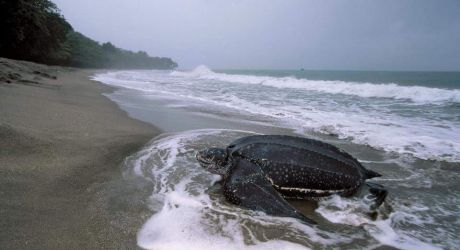
-
A total of
6309
Travelers
-
donated
$15001.04
(100% funded) -
to help improve
Environment
-
in
Panama
Project Background
This project was carried out during the 2017 leatherback and hawksbill turtle nesting season at Chiriquí Beach, Panama. Chiriquí Beach, located east of Bocas del Toro, Panama, on the Atlantic Coast of Central America, is a 24 km beach that hosts globally-important nesting populations of both leatherback and hawksbill sea turtles. For decades the hawksbills nesting at Chiriquí were killed by the tons for their shells, which fed international demand for “tortoise shell.” Meanwhile, both leatherbacks and hawksbills face ongoing pressure from illegal poaching and predation by feral dogs.
The aim of this project was to implement a seasonal program of nest monitoring, collaboration with indigenous community members and nest protection in order to stop the killing and predation of sea turtles and their nests at Chiriquí Beach – and also to improve hatchling survival by reducing threats such as predation by feral dogs.
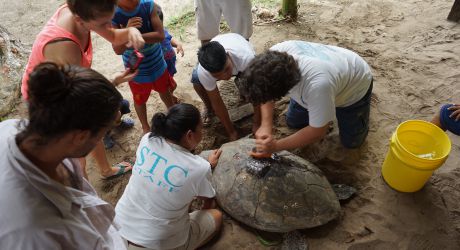
Project Overview
STC carried out a rigorous research and conservation program in partnership with the indigenous Ngobe-Bugle Indian community at Rio Cana and Rio Chiriquí (located on both ends of Chiriquí Beach). This work was supported greatly by the funding provided by the Footprints Network.
Through the project, Sea Turtle Conservancy collected vital survivorship and nesting trend data about the sea turtle populations. In addition, our staff, in coordination with the local community, carried out a rigorous nest protection and anti-poaching program to increase hatchling survival.
As part of this program, we carried out community education efforts to increase control of dogs, and we covered vulnerable nests with wire mesh in order to deter predation. Members of the indigenous community were trained how to monitor and protect nests, and at least 20 community members were employed full-time on the project – providing a sustainable source of income to a good number of local families.

Project Objectives & Activities
The four objectives of this project were:
- To sustain a long-term research and conservation program at Chiriquí Beach, a globally-important nesting site for both leatherback and hawksbill sea turtles.
- To reduce illegal poaching of nesting females and egg clutches in order to increase productivity of leatherbacks and other species nesting at Soropta.
- To reduce egg and hatchling mortality caused by predation from dogs through caging and direct protection of nests, along with a sustained education program in the neighbouring community
- Actively involve local community members in the project and implement environmental education programs in nearby communities to build local awareness and stewardship.
Each of these objectives was carried out successfully during the course of the project. In particular, the nest protection program was successful at reducing the level of poaching and decreasing the number of nests impacted by predators—particularly dogs. The problem still remains, but the number of nests disturbed by dogs was reduced significantly this year.
In order to track the survival rate of nests at Chiriquí Beach, community members trained by STC biologists carried out careful monitoring of nests. The results give us a scientifically accurate assessment of the overall level of poaching and predation at Chiriquí Beach. Compared with the total amount of nesting so far this year (3,146 leatherback nests & 1,199 hawksbill nests), the level of poaching was quite low. Predation is a more significant problem, but the number is decreasing each year that STC works on this beach.
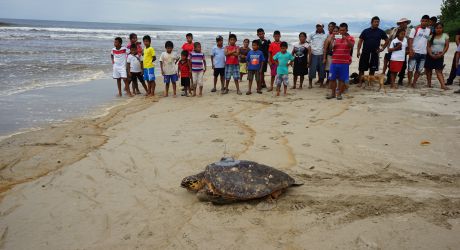
Tracking & Education
STC also conducted its satellite-tracking education program that involved putting transmitters on three leatherback turtles and one hawksbill turtle at Chiriquí Beach. All of these turtles are being tracked online at www.tourdeturtles.org and are yielding important information about the migratory movements of sea turtles. Most importantly, many members of the indigenous community came out to watch the release of the turtles – a celebration that helped reinforce the need to protect and cherish this important animal that nests on beaches under the jurisdiction of the indigenous community.
What Next?
The work at Chiriquí Beach represents a long-term commitment by STC to monitor and protect this critical nesting beach in partnership with the local community. We foresee the program continuing for at least another decade or more.
Traveling soon? When you buy travel insurance with us, you can make a contribution towards a cause you care about.
Get a quote